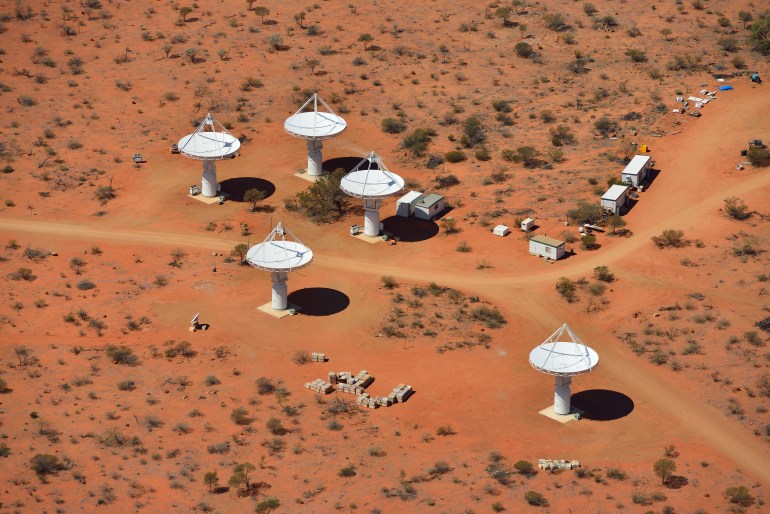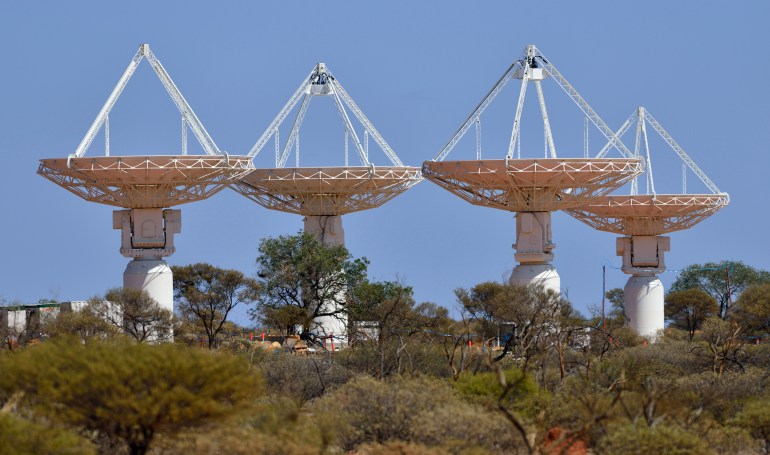‘Game-changer’ telescope takes panoramic images of deep space at record speed and opens the way to new discoveries.
A powerful new telescope in outback Australia has mapped vast areas of the universe in record-breaking time, revealing a million new galaxies and opening the way to new discoveries, the country’s national science agency said on Tuesday.
The radio telescope, dubbed the Australian Square Kilometre Array Pathfinder (ASKAP), was able to map about three million galaxies in just 300 hours. Comparable surveys of the sky have taken as long as 10 years.
 A photo made available on October 5, 2012 shows an aerial view of part of the ASKAP antennas at the Murchison Radio-astronomy Observatory in Eestern Australia [EPA]
A photo made available on October 5, 2012 shows an aerial view of part of the ASKAP antennas at the Murchison Radio-astronomy Observatory in Eestern Australia [EPA]What makes this telescope unique is its wide field of view, using receivers designed by the CSIRO, which allow it to take panoramic pictures of the sky in sharper detail than before.
The telescope only needed to combine 903 images to map the sky, compared with other all-sky radio surveys that require tens of thousands of images.
“It is more sensitive than previous surveys that have covered the whole sky like this, so we do see more objects than have been seen in the past,” McConnell told Reuters news agency.
 The ASKAP telescope, at the remote Murchison Radio-astronomy Observatory in Western Australian desert, is made up of 36 antennas, each 12 metres (40 feet) in diameter [Dragonfly Media/CSIRO/AFP)
The ASKAP telescope, at the remote Murchison Radio-astronomy Observatory in Western Australian desert, is made up of 36 antennas, each 12 metres (40 feet) in diameter [Dragonfly Media/CSIRO/AFP)“Even with this first pass we’ve got right now, compared with previous images, we’ve already found some unusual objects,” McConnell said, including some unusual stars that undergo violent outbursts.
He said data gathered in this survey would allow astronomers to find out more about star formation and how galaxies and black holes evolve through statistical analyses.
The initial results were published on Tuesday in the Publications of the Astronomical Society of Australia.
https://ift.tt/2Jx7qve
Science
No comments:
Post a Comment